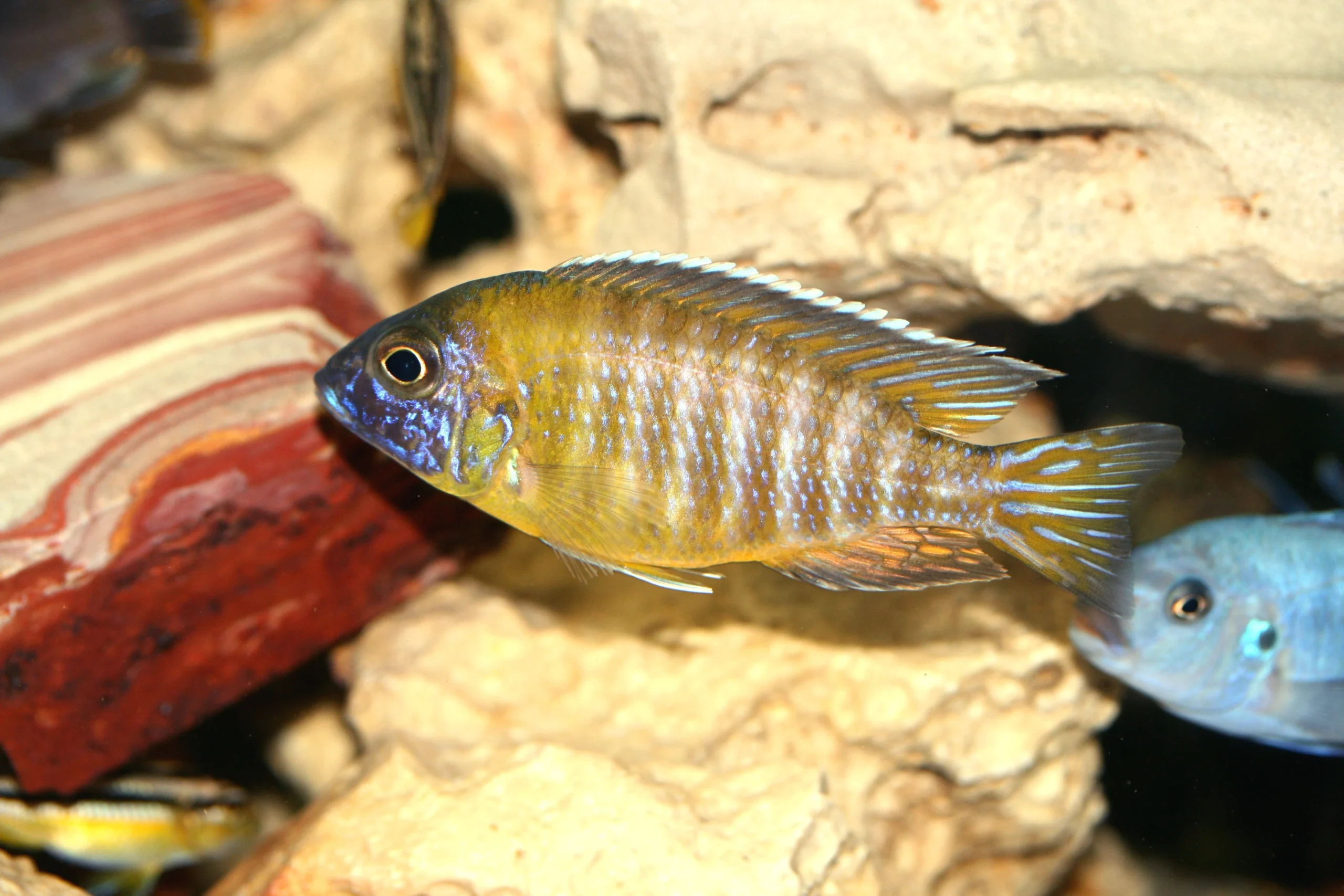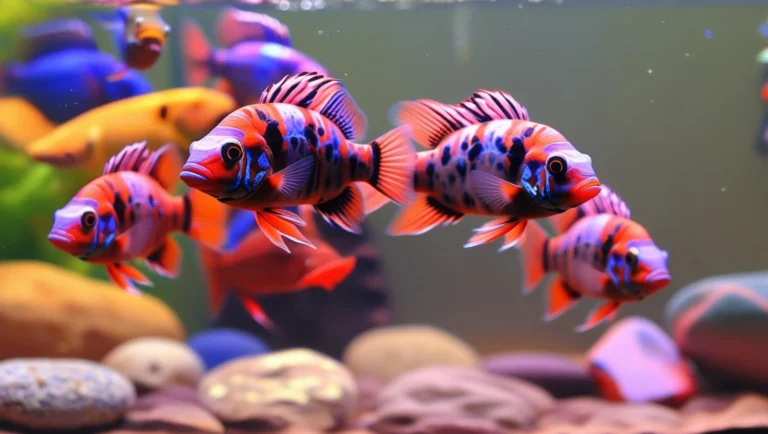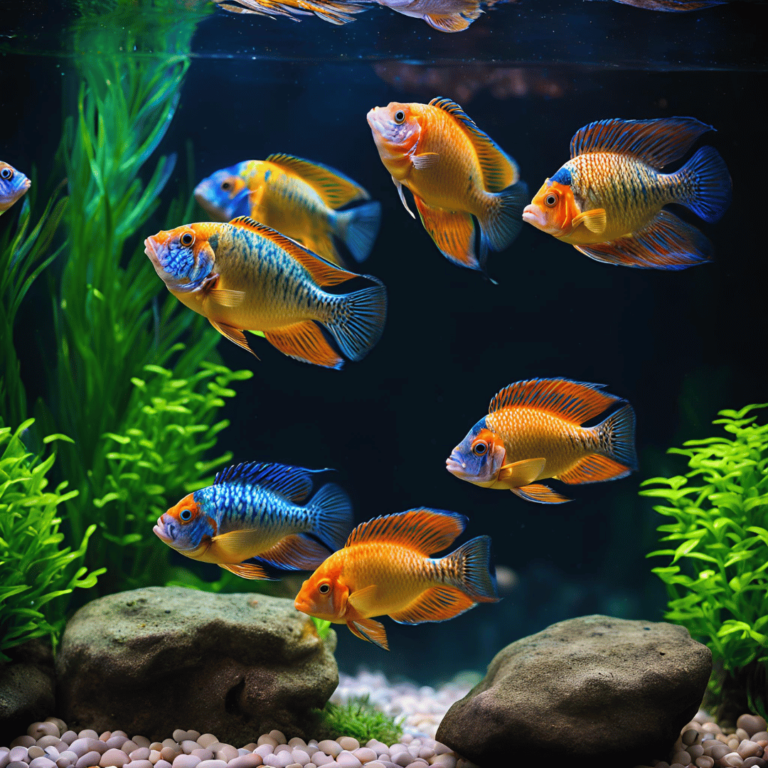Your trusted guide to cichlid care, tank setups, and quality products.

10 Proven Tips to Master Peacock Cichlid Diet and Breeding
Learn how diet impacts Peacock Cichlid breeding success. Discover the best foods, feeding schedules, and supplements to enhance fertility and raise healthy fry.
Image credit pxabay
Peacock Cichlids, known for their dazzling colors and fascinating behaviors, are a favorite among aquarists. For those looking to breed these vibrant fish, Peacock Cichlid Diet and Breeding play a pivotal role. Proper feeding not only improves the overall health of your fish but also directly impacts their reproductive success, egg quality, and fry survival.
In this comprehensive guide, we explore the role of diet in successful Peacock Cichlid Diet and Breeding, providing actionable tips and insights to help you create the ideal feeding plan for your fish. Whether you’re a beginner or an experienced aquarist, this article will help optimize your efforts.
At PeacockCichlid.com, we believe in transparency and honesty with our readers. Some of the links in this article are affiliate links, which means we may earn a small commission if you make a purchase through them—at no additional cost to you. These commissions help support our site, allowing us to continue providing expert advice, in-depth guides, and valuable content for Peacock Cichlid enthusiasts like you.
We only recommend products that we trust and believe will be beneficial for your aquarium. Thank you for your support!
1. Importance of Nutrition in Peacock Cichlid Diet and Breeding
For Peacock Cichlids, a balanced and nutrient-rich diet is essential for breeding success. Nutritional deficiencies can lead to poor egg quality, reduced fertility, and stress-induced health issues. A well-fed breeding pair is more likely to spawn and produce healthy fry, highlighting the critical link between Peacock Cichlid Diet and Breeding.
Providing a nutrient-dense diet helps ensure that males maintain their vibrant coloration and females have the resources needed to produce healthy, viable eggs. Without proper nutrition, fish may experience delayed spawning or produce fry with low survival rates.
2. Avoiding Common Feeding Mistakes in Peacock Cichlid Diet and Breeding
Many aquarists unknowingly feed their fish low-quality or imbalanced diets. Common issues include overfeeding, a lack of essential nutrients, or reliance on one type of food. These mistakes can lead to bloating, lethargy, and diminished breeding activity, negatively impacting Peacock Cichlid Diet and Breeding efforts.
Overfeeding not only harms the fish but also degrades water quality in the tank, which can stress breeding pairs and negatively affect fry development. A clear feeding strategy ensures optimal health for both adult fish and offspring.
3. Incorporating Protein-Rich Diets for Peacock Cichlid Diet and Breeding
Protein is the cornerstone of a breeding Peacock Cichlid’s diet. High-protein foods provide the energy needed for courtship and spawning activities. For females, protein is vital for the production of eggs and proper development of fry.
Tip: Aim for foods containing at least 40% protein for breeding pairs to support optimal Peacock Cichlid Diet and Breeding.
High-protein diets also help males maintain the vibrant coloration needed to attract mates, ensuring successful pair bonding.
4. Using Omega-3 Fatty Acids to Enhance Peacock Cichlid Diet and Breeding
Omega-3 fatty acids are critical for egg development and fertility. These nutrients enhance egg membrane quality, improving hatch rates and fry survival—key components of successful Peacock Cichlid Diet and Breeding.
Sources: Live or frozen foods such as brine shrimp, krill, and spirulina-enriched feeds are excellent options.
Omega-3 fatty acids also help reduce inflammation and promote overall fish health, which is especially important during the energy-demanding breeding period.
5. Choosing the Best Live Foods for Peacock Cichlid Diet and Breeding
Live foods mimic a natural diet and are highly beneficial for conditioning breeding pairs. They are rich in protein, nutrients, and promote natural hunting behaviors, which keep cichlids active and healthy.
- Brine Shrimp: High in protein and Omega-3 fatty acids.
- Daphnia: A great source of vitamins and minerals.
- Bloodworms: Packed with protein, but use sparingly to prevent bloating.
Live foods also stimulate breeding behaviors in males by providing the energy needed for courtship displays and territory defense.
6. Incorporating Frozen Foods for Peacock Cichlid Diet and Breeding
Frozen foods retain most of their nutritional value and are safer than live foods, as they eliminate the risk of introducing parasites or harmful bacteria into the tank.
- Frozen Krill: Enhances color vibrancy and breeding readiness.
- Frozen Brine Shrimp: A staple food for conditioning cichlids and promoting reproductive health.
Frozen foods are easy to store and offer a reliable source of nutrition when live foods are unavailable.
7. Selecting High-Quality Pellets and Flakes for Peacock Cichlid Diet and Breeding
When live and frozen foods aren’t available, high-quality pellets and flakes can provide balanced nutrition for breeding pairs.
Tip: Choose products with at least 40% protein and avoid fillers like corn, wheat, or artificial additives.
High-quality pellets often include additional nutrients such as Omega-3 fatty acids, vitamins, and minerals that are essential for Peacock Cichlid Diet and Breeding success.
8. Establishing a Feeding Schedule for Peacock Cichlid Diet and Breeding Success
Feeding frequency and portion control are critical for maintaining your cichlids’ health during breeding.
- Feeding Frequency: Feed breeding pairs 2–3 times daily in smaller portions.
- Portion Size: Offer only what the fish can consume in 2–3 minutes to avoid uneaten food polluting the tank.
A consistent feeding schedule ensures the fish receive the nutrients they need while minimizing waste and maintaining tank water quality.
9. Adding Supplements to Boost Peacock Cichlid Diet and Breeding
Vitamins and minerals can significantly enhance fertility and fry health when added to the diet.
- Vitamin C: Boosts immunity, promotes tissue repair, and aids egg production.
- Vitamin E: Improves fertility, supports fry development, and enhances egg quality.
- Calcium and Trace Minerals: Essential for strong egg shells and fry skeletal development.
Supplements can be added to live or frozen foods for extra benefits. Many high-quality pellet foods already include these essential nutrients.
10. Adjusting Diet for Mouthbrooding Females and Fry
Mouthbrooding females and fry require special dietary adjustments to ensure their health and survival.
- Mouthbrooding Females: During brooding, females often stop eating. Post-brooding, offer soft, nutrient-dense foods like crushed pellets, gel foods, or frozen brine shrimp to help them recover.
- Fry: Start with infusoria or commercial fry powders for their first meals. As they grow, introduce baby brine shrimp and finely crushed flakes.
Tip: Feed fry 3–4 times daily in small amounts to ensure consistent growth and survival rates.
Conclusion: Peacock Cichlid Diet and Breeding Success
Diet plays a fundamental role in the successful breeding of Peacock Cichlids. By understanding their nutritional needs, providing high-quality foods, and maintaining a balanced feeding schedule, aquarists can create the ideal conditions for spawning and raising healthy fry.
Key Takeaways for Peacock Cichlid Diet and Breeding:
- Focus on a high-protein, Omega-3-rich diet to condition breeding pairs.
- Incorporate live, frozen, and pellet foods for balanced nutrition.
- Use vitamins and mineral supplements to boost fertility and fry health.
- Adjust feeding strategies for mouthbrooding females and growing fry.
For more insights and product recommendations, visit peacockcichlid.com, your trusted source for Peacock Cichlid Diet and Breeding tips.
Enhance your peacock cichlid journey by exploring more of our in-depth guides at peacochcichlid.com. For instance, if you’re eager to refine your breeding techniques even further, check out our article “Breeding Peacock Cichlids: 5 Proven Tips for Massive Success” for additional expert insights. You might also find our “Best Diet for Peacock Cichlids: 10 Tips for Vibrant Colors” guide a perfect complement to your feeding strategy, and if you’re just starting out, our “Peacock Cichlid Care: 7 Powerful Tips for Beginners” is a must-read to set you on the right path.
We’re constantly updating our resources with practical tips and expert advice, so be sure to visit us regularly and follow our social media channels to stay connected with the latest trends and community news. Happy reading and keep thriving with your aquariums!
FAQ’s
Why is nutrition important for Peacock Cichlid breeding?
Proper nutrition directly impacts reproductive success, egg quality, and fry survival. A well-balanced, nutrient-rich diet ensures that males maintain vibrant coloration and females produce healthy, viable eggs.
What are common feeding mistakes that can affect breeding success?
Common mistakes include overfeeding, using low-quality or imbalanced foods, and relying on a single food type. These issues can lead to poor health, reduced fertility, and degraded water quality, all of which hinder breeding efforts.
What is the ideal protein level for breeding Peacock Cichlids?
Foods with at least 40% protein are recommended for breeding pairs. Protein supports energy-intensive activities like courtship, spawning, and egg production, while also maintaining the male’s vibrant coloration.
How do Omega-3 fatty acids benefit breeding Peacock Cichlids?
Omega-3 fatty acids enhance egg membrane quality, improving hatch rates and fry survival. They also reduce inflammation and promote overall health, which is crucial during breeding.
What live foods are best for Peacock Cichlid diet and breeding?
– Brine Shrimp: High in protein and Omega-3s.
– Daphnia: Rich in vitamins and minerals.
– Bloodworms: Protein-packed but should be fed sparingly.
Live foods stimulate natural behaviors and provide energy for courtship and spawning.
Are frozen foods as effective as live foods for breeding?
Yes, frozen foods like krill and brine shrimp retain most of their nutritional value and are safer because they eliminate the risk of introducing parasites or harmful bacteria. They are a reliable option when live foods are unavailable.
How should pellets and flakes be chosen for breeding pairs?
Select high-quality pellets and flakes with at least 40% protein and no fillers like corn or wheat. These foods often include added vitamins, minerals, and Omega-3s essential for breeding success.
What is the best feeding schedule for breeding Peacock Cichlids?
Feed breeding pairs 2–3 times daily in smaller portions, providing only what they can consume in 2–3 minutes. This ensures consistent nutrition while maintaining water quality in the tank.
Should I use dietary supplements for Peacock Cichlids?
Yes, adding vitamins and minerals can boost fertility and fry health:
– Vitamin C: Enhances immunity and egg production.
– Vitamin E: Improves fertility and fry development.
– Calcium: Strengthens egg shells and fry skeletal development.
How do I adjust the diet for mouthbrooding females and fry?
– Mouthbrooding Females: Post-brooding, feed them soft, nutrient-dense foods like crushed pellets or frozen brine shrimp to help recovery.
– Fry: Start with infusoria or fry powders, then gradually introduce baby brine shrimp and finely crushed flakes. Feed 3–4 times daily in small amounts for consistent growth.



